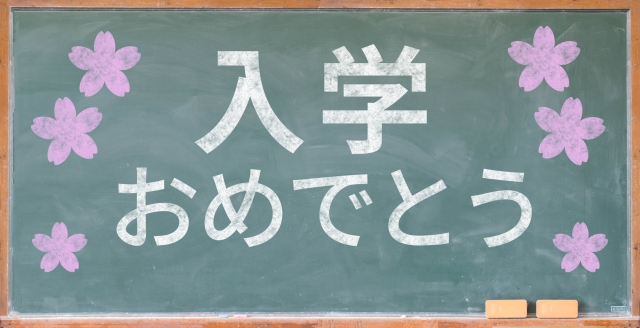"Izakaya is fun."
Izakaya is a popular place to enjoy drinks and light meals with friends and colleagues. Shops usually have a casual atmosphere and offer a variety of drinks and food.
An izakaya is a place where you can eat and drink in a relaxed atmosphere. There are high-end facilities, but they are generally reasonably priced. Izakaya are common throughout the country and tend to gather near train and subway stations. Japanese beer, sake and shochu are standard items on the drink menu and have non-alcoholic options. There are usually a variety of food choices, often composed primarily of traditional Japanese cuisine. The food is intended to be shared among the members of the group. The cost of meals varies depending on the type of facility and the number of customers ordering, but it is usually around 2,000 to 7,000 yen per person.

Click here to learn Japanese language with the best one-on-one Japanese tutoring lessons in online.
Traditional taverns have table and counter seats. There may also be tatami areas where customers must take off their shoes. There are many privately owned facilities, but since around 1975, corporate izakaya chains have provided convenient, if not genuine, alternatives. With its low price, set menu and standard interior, it is popular with young customers, women and families. Some have menus with pictures and English explanations.
After the customer is guided to their seat, the staff will arrange the plates and chopsticks. The first step is usually to order an alcoholic beverage. Small moon appetizers are often served with the first drink. It may be free, but generally it costs around 300 to 500 yen, and a seat fee will be charged.
A place where plates, chopsticks, paper napkins, soy sauce plates, and appetizers are lined up.
When you receive your drink, clink the glass and cheer (Kampai) to relax. When you’re ready to order food, raise your hand to attract staff (some facilities make this easier by equipping the table with a call button). Apart from the table menu, items and prices are often written on the wall display. There are also some chains that customers can order using the touchpad menu.
The choice depends on the restaurant, but there are many years of favorites such as cold tofu, fried fried chicken, sashimi, edamame, and yakitori. There are also local and seasonal dishes.
Clockwise from top left: Umeboshi chu-hi. Cold tofu topped with green onions and dried bonito flakes. Fried chicken; pickles and sake; spinach and beer with dried bonito flakes. Fried horse mackerel and cabbage.
The sashimi in the foreground includes yellowtail (amberjack), tuna, and ark shell from the left. It is served with wasabi on a bed of finely chopped radish.
Some izakaya still serve sake in wooden containers.
In the Edo period (1603-1868), a standing stick called Sakaya appeared. These became known as taverns and began selling simple snacks such as simmered vegetables and oden pots.
Since there were no glass bottles at the time, the brewery placed an order with the tavern in large wooden barrels. The owner lined up the barrels near the entrance and served drinks in a wooden weighing container called Masu. At that time, the main reason for going to an izakaya was drinking, and a secondary concern was food. The facility has become a favorite drinking place for the general Japanese.
You can order the draft beer (draft beer) or bottled beer (bottle beer) provided in the glass mug and pour it yourself. Traditionally, sake is served warm or at room temperature, but chilled sake is also popular. Shochu is a distilled liquor made from rice, barley, sweet potatoes, etc. They can be drunk on rocks or mixed with cold or hot water. When you mix shochu with fruit juice, flavored syrup, and soda, it is called chu-hi or sour. It’s fun to compare different brands across the country, as sake and shochu varieties can vary widely depending on the climate and manufacturing method.

居酒屋”
カルチャー
居酒屋は、友人や職場の同僚との飲み会や食事のために立ち寄れる人気のお店です。お店は通常、カジュアルな雰囲気で、さまざまな飲み物や食べ物を提供しています。
飲んで、食べて、リラックス
居酒屋とは、落ち着いた雰囲気の中で飲食ができるお店です。高級店もありますが、一般的にはリーズナブルな価格です。居酒屋は全国各地にあり、鉄道や地下鉄の駅周辺に密集しているのが特徴です。ドリンクメニューは日本のビール、日本酒、焼酎が定番ですが、ノンアルコールのものもあります。通常、食事の選択肢は幅広く、伝統的な日本食を中心としたものが多い。料理はグループのメンバーでシェアすることを目的としています。食事の費用は、施設の種類や注文の量によって異なりますが、一般的には一人あたり2,000円から7,000円程度です。
伝統的な居酒屋には、テーブル席とカウンター席があります。また、靴を脱がなければならない座敷席がある場合もあります。個人経営のお店も多いですが、1975年頃からは企業の居酒屋チェーン店が便利で親しみやすく、本格的な居酒屋ではありませんが、代わりになるものを提供しています。低価格、定食、スタンダードな内装で、若い客層や女性、ファミリー層に人気がある。写真付きのメニューや英語の説明文がついているものもある。
客が席に案内された後、スタッフが皿と箸を並べる。最初のステージは飲み物を注文することです。飲み物の最初のラウンドと一緒に小さなつき出しの前菜が提供されることがよくあります。無料の場合もありますが、一般的には300~500円程度で、着席料となります。
飲み物が運ばれてきたら、グラスを合わせて乾杯し、リラックスした状態でスタートします。料理を注文する準備ができたら、手を挙げてスタッフを呼び込みます(テーブルにコールボタンがついているところもあります)。テーブルの上のメニュー以外にも、壁には商品や値段が書かれていることが多いです。中には、タッチパッド式のメニューを使って注文できるチェーン店もあります。
お店によって品ぞろえは異なるが、昔からの人気メニューは、ひややっこ、唐揚げ、刺身、枝豆、焼き鳥など。また、地元の名物料理や季節の名物料理もある。
左上から時計回りに、梅干のチューハイ、ねぎと鰹節のひややっこ豆腐、鶏の唐揚げ、漬物と酒、ほうれん草とビールの鰹節和え、鯵とキャベツの炒め物。
手前のお造りは(左から)ハマチ、マグロ、アカガイ。千切り大根の上に山葵をかけていただきます。
居酒屋の中には、今でも木製の枡に入れて酒を出すところもある。
江戸時代には「居酒屋」と呼ばれる立ち飲み屋が登場しました。居酒屋と呼ばれるようになり、煮物やおでん鍋などの簡単なおつまみを販売するようになりました。
当時はガラス瓶がなかったため、酒蔵は注文を受けて大きな木樽に入れて居酒屋に納品していました。入り口付近に樽を並べ、枡(ます)と呼ばれる木の計量器に入れてお酒を出していました。当時、居酒屋に行くのは酒がメインで、食事は二の次だった。庶民のお気に入りの飲み屋となりました。
お客様は、ガラスのジョッキで提供される生ビール(nama bīru)や、自分で注ぐ瓶ビール(bin bīru)を注文することができます。伝統的に日本酒は熱燗または常温で提供されるが、冷やした霊酒も人気がある。正中は米、大麦、サツマイモなどを原料とする蒸留酒で、ロックで飲むこともできる。ロックで飲んだり、冷水やお湯に混ぜて飲んだりすることができる。また、フルーツジュースやフレーバーシロップ、ソーダなどと混ぜて飲むと「チューハイ」や「サワー」と呼ばれ、日本酒や焼酎と同じように、日本酒や焼酎にも様々な種類があります。日本酒や焼酎は気候や製法によって品種が大きく異なるため、全国の銘柄を飲み比べてみるのも楽しい。
Related article:
HH JapaNeeds
Your tutor. Your time. Your location.
https://hh-japaneeds.com/










